Ready for a trip down memory lane? From Etch A Sketch to Big Wheels to Power Rangers, enjoy this blast from your toy past.
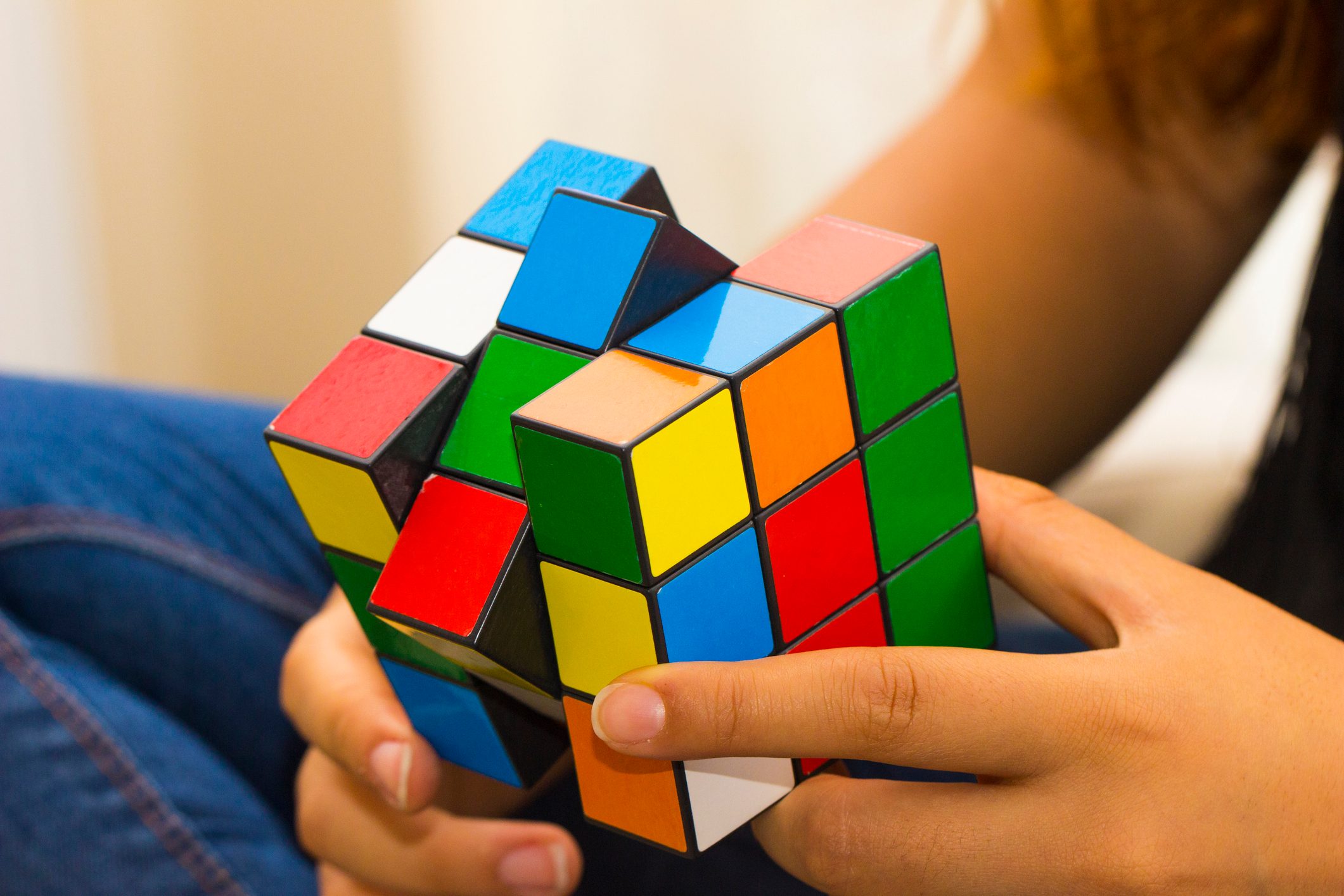
The Most Popular Toy the Year You Were Born

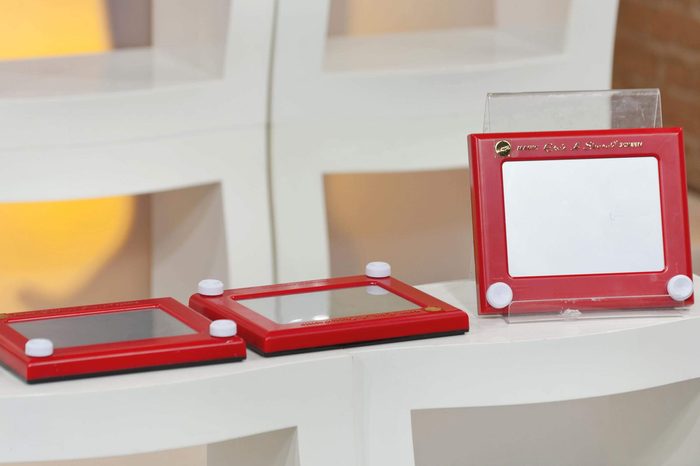
1960: Etch A Sketch
In the 1950s, French electrician Andre Cassagnes was inspired to create the toy when he made some pencil marks on a factory light switch he had been installing. Using that concept as a catalyst, The Ohio Art Co. launched the Magic Screen in 1960, which was a whole new way to draw without pencil and paper—and you could erase with a shake of your hands. Of course, we now know it as the Etch A Sketch you can still get today.

1961: Slip ‘n Slide
Back in the day, this was the closest you were getting to having a water park in your very own backyard. Thanks to toy company Wham-O, all you had to do was hook up the old garden hose to this long plastic sheet, and voila! You could slide down the Slip ‘n Slide into a small wading pool.
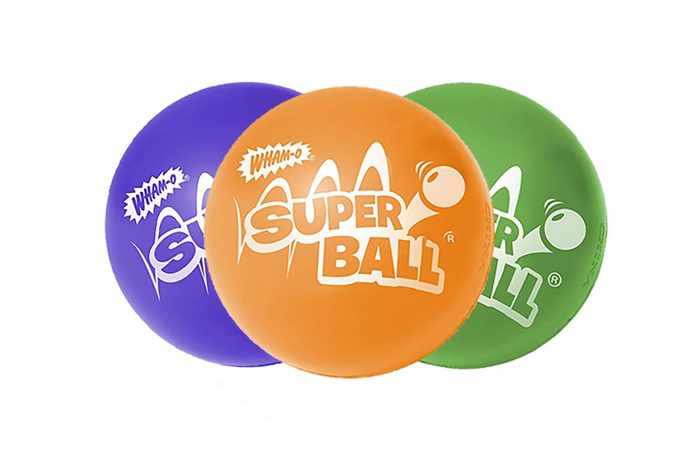
1962: SuperBall
What happens when you accidentally create a plastic ball that bounces? Wham-O buys your idea and it ends up selling millions. That’s exactly what happened to Norman Stingley, a chemical engineer who came upon the compound polymer zectron. At one time, Wham-O had to produce more than 170,000 balls a day to keep up with the demand. Fun fact: According to Wham-O, the NFL named the Super Bowl game after this bouncing ball.
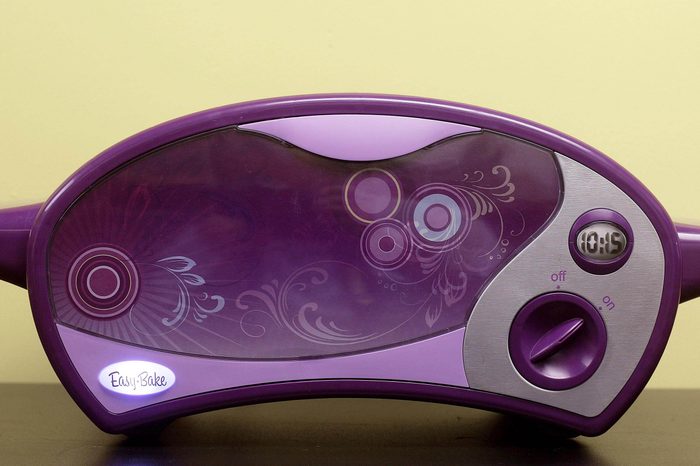
1963: Easy Bake Oven
The original bright teal Easy-Bake Oven had a tiny stove that was heated by an incandescent light bulb that could reach a temp of 350 degrees. In 2013, a 13-year-old girl persuaded the company to create the oven in a more masculine color for her little brother.
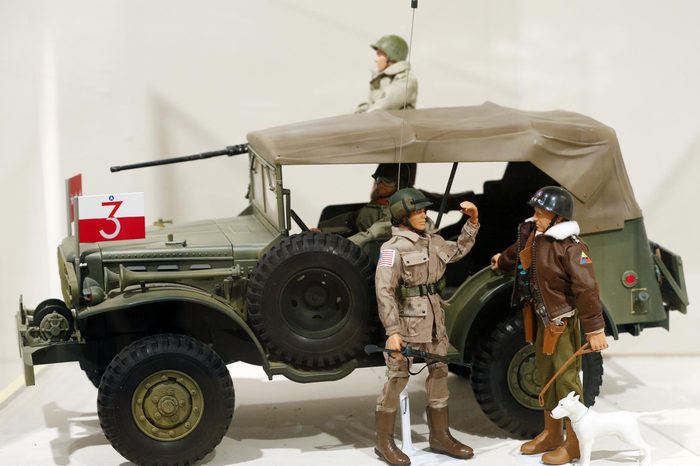
1964: G.I. Joe
Little plastic green army men were already a hit with the boy crowd when Hasbro broke record sales with the launch of G.I. Joe. In fact, in only two years, G.I. Joe became more than half of Hasbro’s sales. Although the original toy patent refers to the figure as a doll, Hasbro later prohibited calling G.I. Joe anything but an action figure. If you have any G.I. Joes still in the box, then you have a hidden treasure in your house right now.
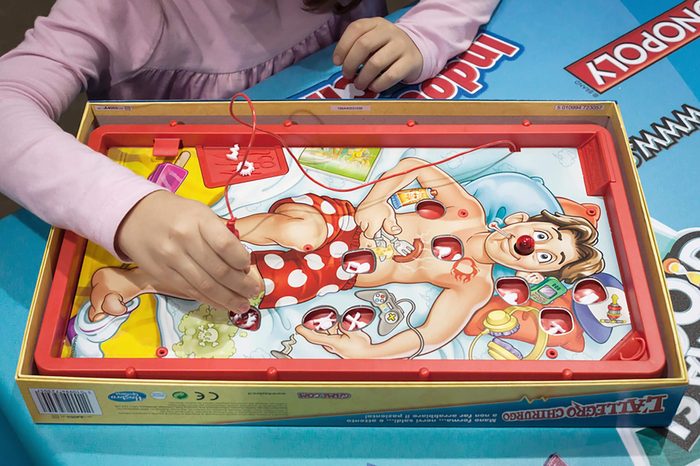
1965: Operation
An unsteady hand is your downfall in the game of Operation, which was invented by John Spinello, a student at the University of Illinois. He sold the game to Milton Bradley for $500. After a redesign, Milton Bradley released the game, and it went on to earn millions. Milton Bradley was eventually purchased by Hasbro in 1980, and they have since come to Spinello’s aid. The New York Daily News reports that after word went viral that Spinello didn’t have enough money to cover $25,000 oral surgery, Hasbro offered to buy Spinello’s original game prototype.
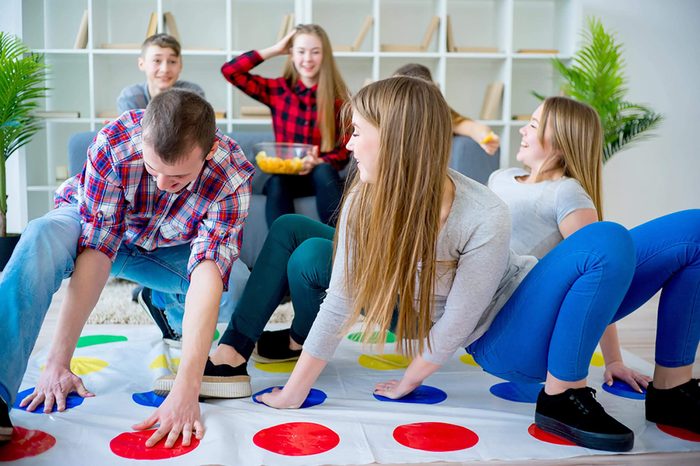
1966: Twister
What began as an advertising promotion for shoe polish turned into a game that would span the decades. The original game was called Pretzel, but the name was unavailable and was changed to Twister. It was almost a flop, as Sears Roebuck thought it was too racy for its catalog. But then it was played on The Tonight Show by none other than Johnny Carson himself and actress Eva Gabor. Their antics made the game an instant hit, with the only store in Manhattan where it was available selling out the next day. In 1967, the game sold more than 3 million copies, and today it’s still considered one of the classic board games everyone should own.
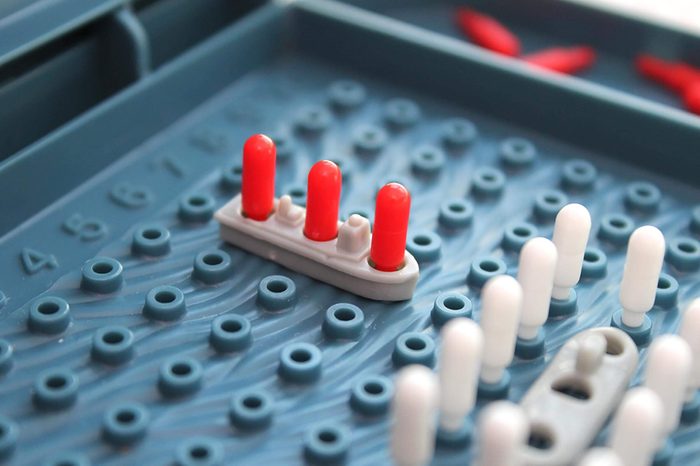
1967: Battleship
Milton Bradley launched the Battleship board game in 1967, but it existed as a pen-and-paper game way before that. The game may date back to Russian soldiers playing it in 1917, and the phrase “You sunk my battleship!” has certainly passed the test of time.
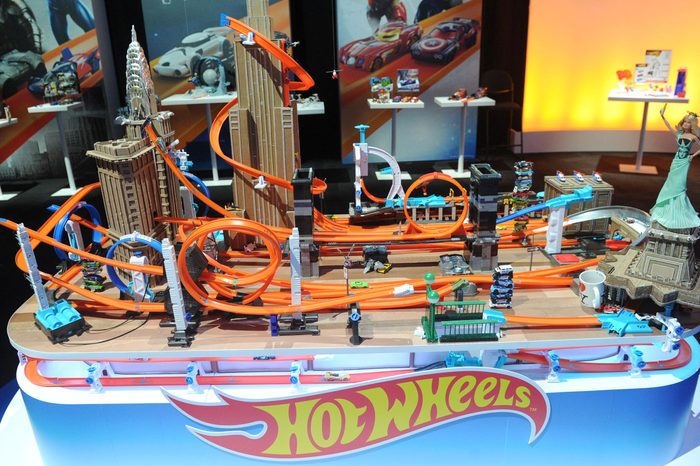
1968: Hot Wheels
It was a dark blue custom Camaro that first hit the shelves back in 1968. Mattel has since sold a billion cars, and in 2012, a Beach Bomb model sold to a collector for $70,000—proof that some childhood toys are now worth thousands.
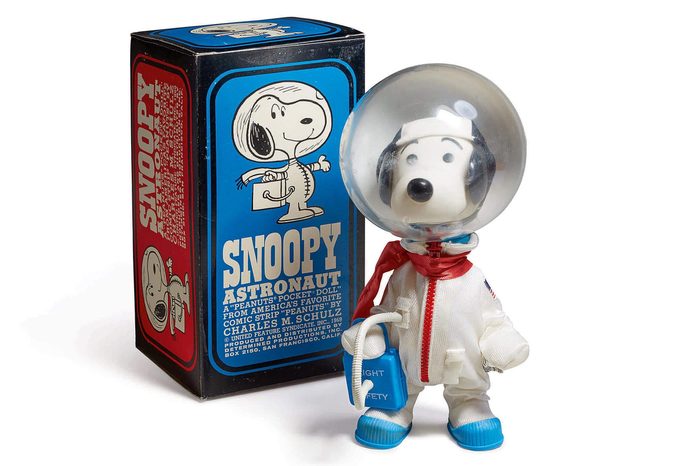
1969: Snoopy Astronaut
Who doesn’t love Snoopy? After all, he’s the lovable, somewhat human beagle of Peanuts cartoon fame. The United States went to the moon in 1969, and the Snoopy toy skyrocketed as well. The character became NASA’s safety mascot for the Apollo program.
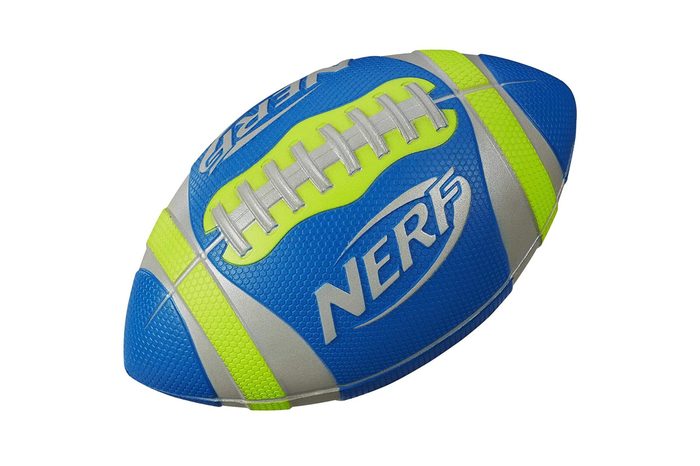
1970: NERF Ball
This foam ball may have been Parker Brothers’s response to the famous line from the ‘70s television series The Brady Bunch: “Mom always says don’t play ball in the house.” The indoor ball was released in 1970, and consumers had snapped up more than 4 million NERF balls by the end of the year. Fun fact: NERF is an acronym that stands for “non-expanding recreational foam” material.
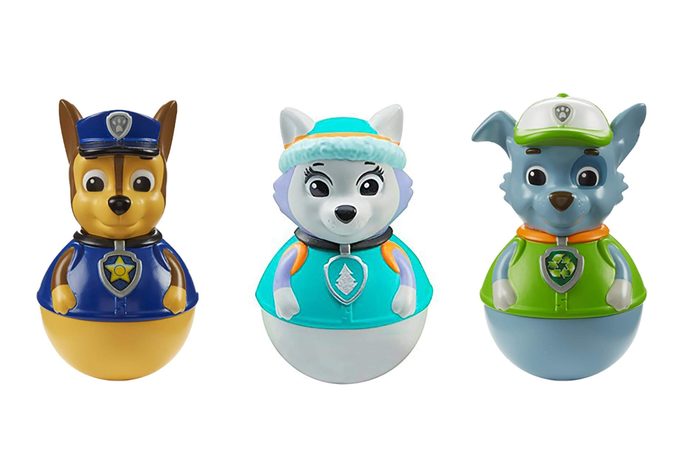
1971: Weebles
Hasbro introduced this toy based on the Punching Clown from the TV show Romper Room. The toys are meant to be mini versions of the clown, who always wobbled but remained upright. This led to the toy’s famous tagline: “Weebles wobble, but they don’t fall down!”

1972: Big Wheel
Produced by the Louis Marx company, the Big Wheel first hit the market in 1969 but gained momentum in the ‘70s thanks to its low price point. What also helped Big Wheels hit it big: parents’ perception that the toy was safer than a tricycle or bike, since it was closer to the ground.
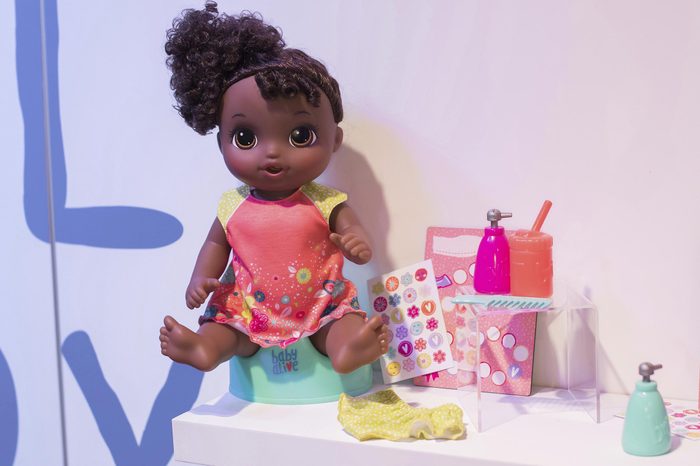
1973: Baby Alive
Baby Alive was a doll that could eat, drink and even wet itself, making itself one of the grossest toys ever made. Introduced in 1973 by Hasbro, the doll had a mechanical mouth that would chew after you fed it packets of special food mixed with water. In 1992, Hasbro gave Baby Alive a voice with a limited vocabulary: She could say “I have to go potty” or “All done now,” but her apparently deep adult voice was too creepy, and the version didn’t sell as well.
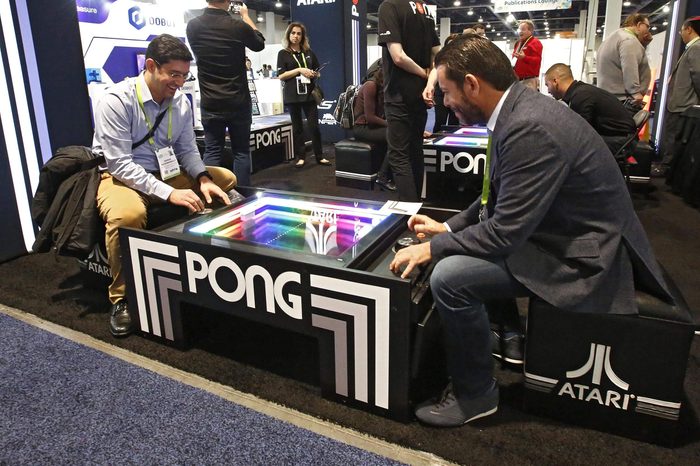
1974: Pong
The birth of a revolution: This was the year that Atari released a home version of the popular arcade game. Although there were about 35,000 Pong arcade machines in pizza parlors and convenience stores across the United States, the home console dominated the holiday season, according to Harold Goldberg, author of All Your Base Are Belong to Us: How Fifty Years of Video Games Conquered Pop Culture.

1975: Pet Rocks
Just in time for Christmas 1975, Pet Rocks became a phenomenon, selling more than 1.5 million rocks in just a few months. Gary Dahl, a freelance copywriter, came up with the idea one night in a bar. The toy’s popularity spread quickly, and Dahl even appeared twice on the Tonight Show. But it was timing and a clever marketing plan that suddenly turned a rock into a nationwide craze.
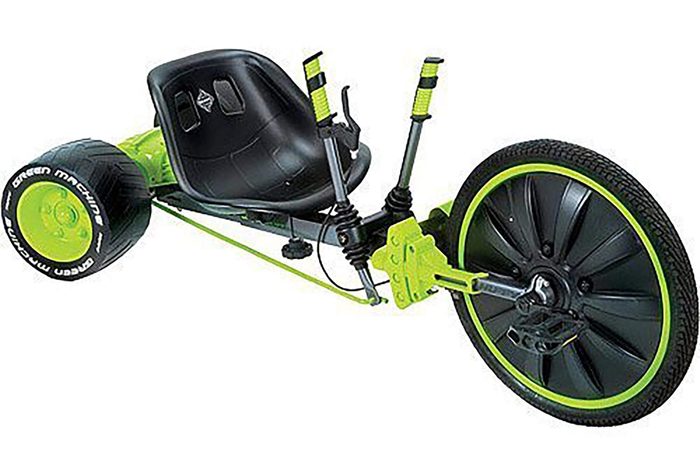
1976: The Green Machine
The Marx company, makers of the Big Wheel, began production on the Green Machine to attract an older crowd of boys who had grown beyond their Big Wheel days. The Green Machine was promoted for its ability to shift gears for quicker turns at sharper angles.
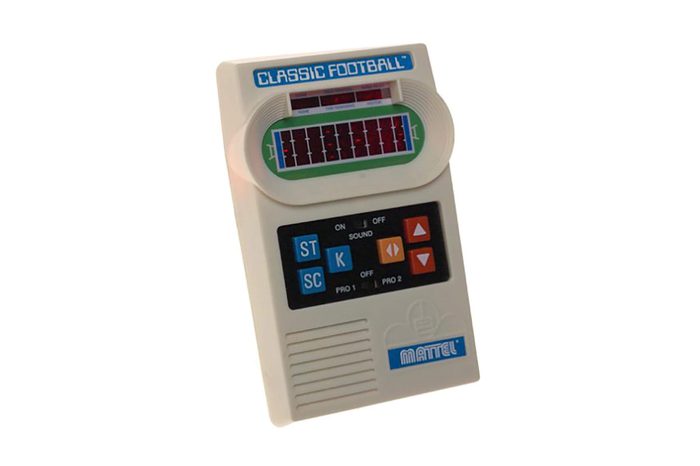
1977: Mattel Football
Although it launched the very same year as the Atari 2600 (on which you could play many more games), the battery-powered Mattel Football game was a bargain at $29.95, which led to its immense popularity. The Atari system cost $199—the equivalent of $800 today.

1978: Star Wars figures
The Star Wars movie came out May 25, 1977, and no one was prepared for its popularity. Toy manufacturer Kenner ran out of figurines almost immediately and had to give out “Early Bird Certificate Packages” until they could get more supply. By 1978, Star Wars figurines were a bona fide phenomenon.
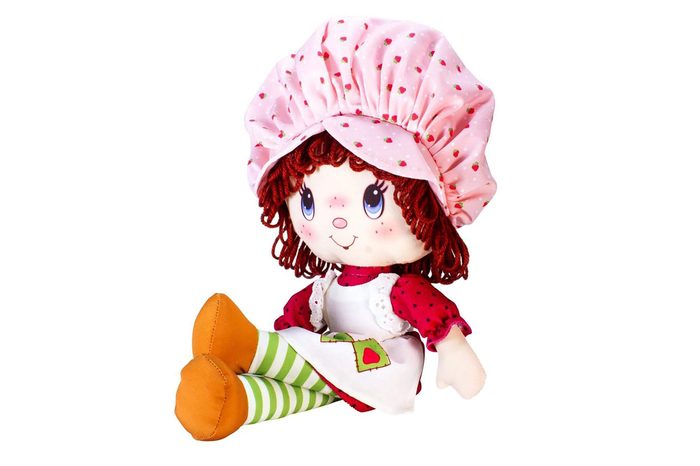
1979: Strawberry Shortcake
This freckle-faced, strawberry-scented doll took off after first appearing as a character for the American Greeting Card Company. Kenner eventually gave the doll a lineup of friends, such as Purple Pieman and Apple Dumplin’.
Keep scrolling as we head out of the disco decade to see more of the most popular toys by year.

1980: Rubik’s Cube
Sold by the Ideal Toy Company, this puzzle cube wasn’t originally intended to be a toy. However, it became the hottest gift of the year in 1980. Supposedly, it made people so nuts that they attempted to pry it apart with a screwdriver to see how it worked. “The Rubik’s Cube has a devious simplicity,” Mike Drake, special projects director for toy company Mezco, told Adweek. With 43,252,003,274,489,856,000 possible color arrangements, solving it remains daunting even now, but there have been more than 350 million cubes sold.
Adweek reports that Ernö Rubik, a professor of architecture in Budapest, devised the cube while trying to teach his students spatial relationships. He called it the Buvos Kocka (“Magic Cube”) and put it up for sale in Hungary. Eventually, the cube ended up in Ideal’s hands, and it continues to torment people to this day.

1981: The Smurfs
When these tiny, blue, forest-dwelling characters appeared on TV in the early ’80s, Smurfs began a frenzy that extended to toy shelves in time for the holidays. These former comic book characters are still being featured in movies 35 years later.
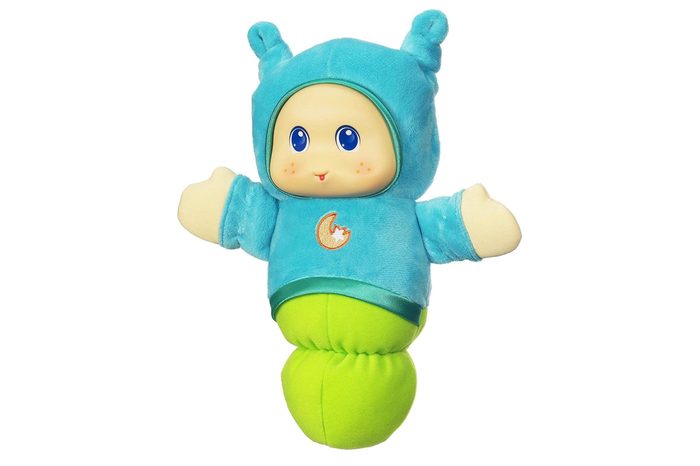
1982: Glo Worm
A bright squiggly worm sounds like the stuff of nightmares, yet somehow this little green plush toy wormed its way into the hearts of children everywhere. At least part of the draw was that the toy functioned as a night-light that kids could cuddle with.
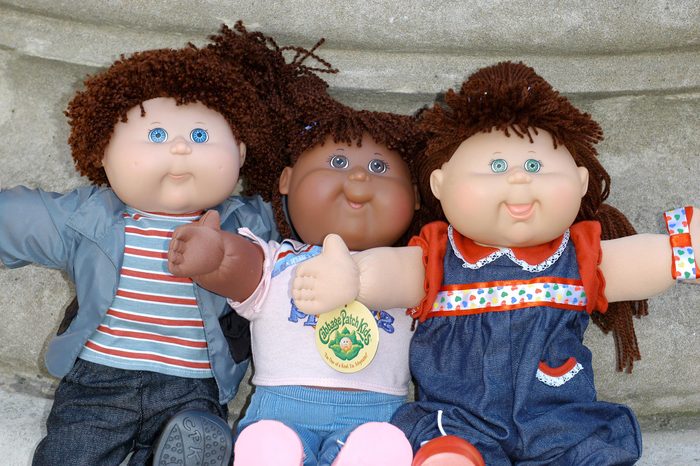
1983: Cabbage Patch Kids
This was the year of all-out Cabbage Patch mayhem: Parents waited on lines for hours to get their hands on these dolls. While Xavier Roberts gets credit for what he coined the Little People Doll, which came with an accompanying hand-printed birth certificate, apparently he stole the idea from Kentucky artist Martha Nelson Thomas—and she never got a dime.
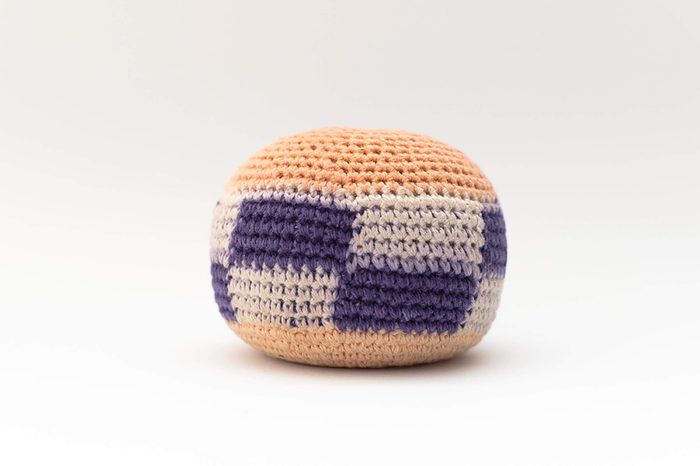
1984: Hacky Sack
No such thing as boredom as long as you have a Hacky Sack around. Although it was invented in 1972, Wham-O purchased the rights to the little footbag in 1983 and brought it to the masses. The Hacky Sack marked the birth of a whole new alternative sports culture.
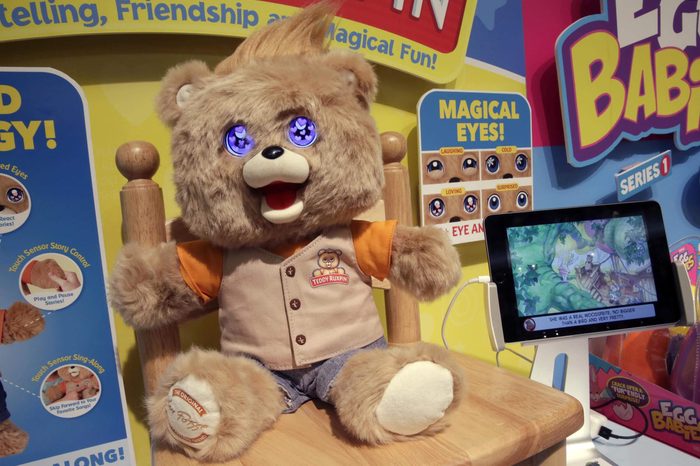
1985: Teddy Ruxpin
A talking bear may seem commonplace these days, but it was a revelation in the mid-1980s. In 1985, people bought about 41,000 a month. Teddy Ruxpin could move its mouth and eyes while simultaneously reading or singing via the tape cassette that was inserted into its back.

1986: Care Bears
These pastel-colored bears were known for wearing their emotions on their belly instead of their sleeves, with illustrations of rainbows and flowers. The bears represented feelings with names like “Funshine” and “Grumpy.” They even had their own TV series and movies.

1987: Koosh Ball
Talk about confidence—Koosh Ball inventor Scott Stillinger quit his day job even though all he had was a sample of a bunch of rubber bands tied together. His optimism was warranted: The ball became a sensation and was carried in 14,000 toy stores worldwide. Fun fact: The name Koosh captured the sound the ball made when playing catch with it.
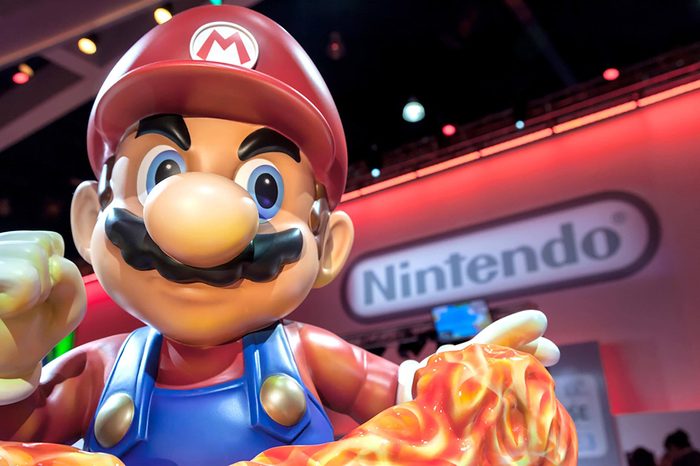
1988: Super Mario Bros.
When the Nintendo Entertainment System launched in the fall of 1986 with only 17 available games, the one that would end up dominating the market and pushing Nintendo into the hearts and homes of American children everywhere was Super Mario Bros. By 1988, Mario the plumber (and his brother Luigi) had become synonymous with Nintendo. The brothers went on to capture the hearts of new generations, although the game franchise has expanded greatly over the decades.

1989: Game Boy
Another seminal moment in handheld gaming history: The Nintendo Game Boy launched in the summer of 1989, and it continues to impact the video game industry to this day, according to International Business Times.

1990: Teenage Mutant Ninja Turtles
Created by two comic book artists, these unlikely turtle heroes were loosely based on the Daredevil comic book series of the late 1960s. The comics were a hit, but Turtlemania did not reach its full frenzy until licensing agent Mark Freedman stepped in with a plan to market the turtles.

1991: Super Nintendo
The 8-bit Nintendo Entertainment System was a hit back in 1988, and then Nintendo struck gold again with this 16-bit update. It sold more than 49 million consoles worldwide.

1992: Trolls
These quirky figures were originally called Dam Dolls after their Danish inventor Thomas Dam, and the dolls were originally made of wood, with woolen hair and glass eyes. The plastic versions released in North America were actually unauthorized, and it took the Dam family until 2003 to regain their copyright privileges.

1993: Beanie Babies
At one time, owning one of these pellet-filled toy animals could pay for a semester of college, reports the New York Post. That’s because creator Ty Warner limited production on certain Beanies and retired others to create a Beanie shortage. In addition to causing a frenzy during Christmas shopping season, the demand had collectors shelling out up to $5,000 for the $5 toy.
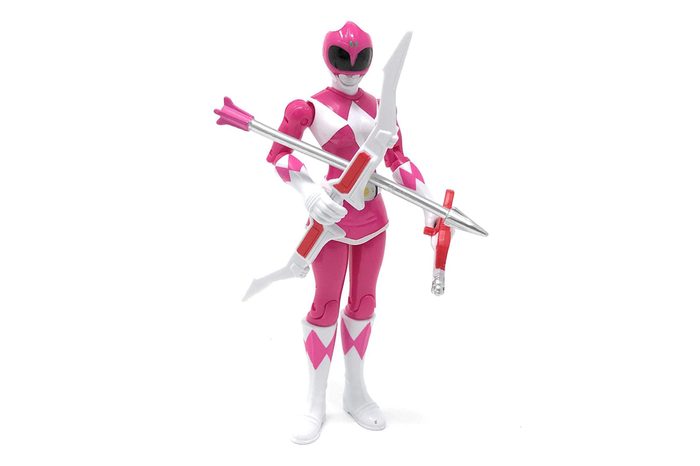
1994: Power Rangers
Sure, the show wasn’t particularly sophisticated, but the action figures based on the show’s characters took the toy world by storm. Power Rangers toys accounted for $1 billion in sales that year, making it one of the most popular toys by year on our list.
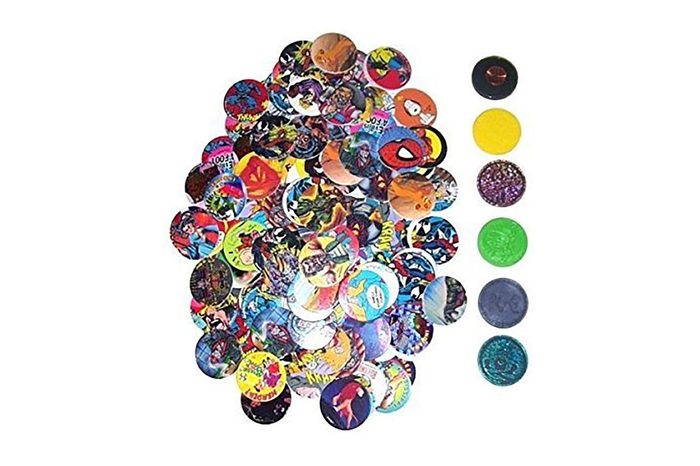
1995: Pogs
Recycling took on a whole new life when a disposable bottle cap from a Hawaiian drink called Passion Orange Guava (POG) turned into a ’90s game craze. A teacher inadvertently set the craze in motion: She used the drink’s cap to teach her students a game her grandparents had played on their Hawaiian plantations with milk bottle lids.
When the printer of Passion Orange Guava’s packaging started getting requests for lids only, an entrepreneur named Alan Rypinski picked up on it and purchased the POG trademark. He then formed the World POG Federation, came up with an official Pogman mascot and created licensing agreements with fast-food chains, Hollywood studios and retail chains.
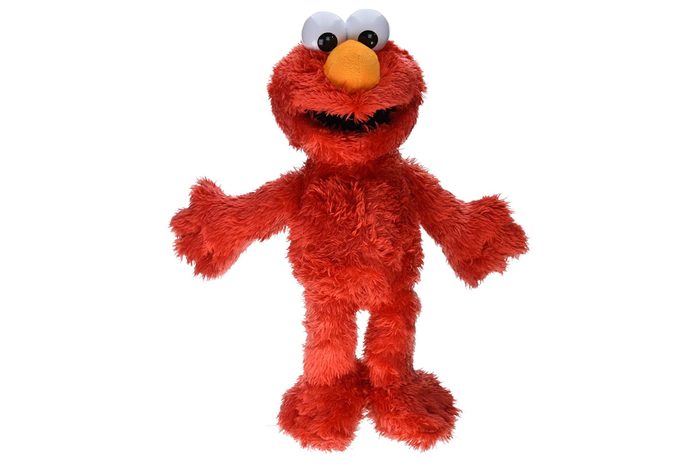
1996: Tickle Me Elmo
Inventor Ron Dubren developed an electronic chip that responded to motion by emitting a giggle, and he put it in a stuffed monkey. His creation didn’t catch fire until Tyco placed it in Elmo—and it proved to be so popular that parents drove miles and waited for hours in search of the toy.
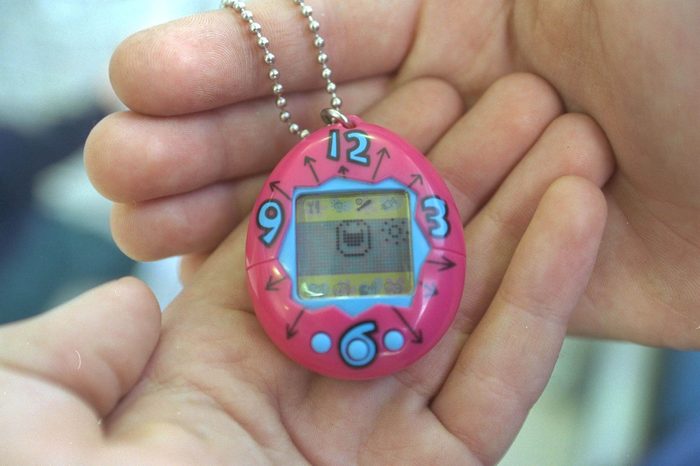
1997: Tamagotchi
A massive success, this handheld digital cyber pet, created by Aki Maita and Yokoi Akihiro of the Japanese toy company Banda, also had a dark side. The egg-shaped toy with a liquid-crystal screen expired if children left it unattended for more than five or six hours a day. This proved to be traumatic for young children, leading psychologists to dub the phenomenon the Tamagotchi Effect.
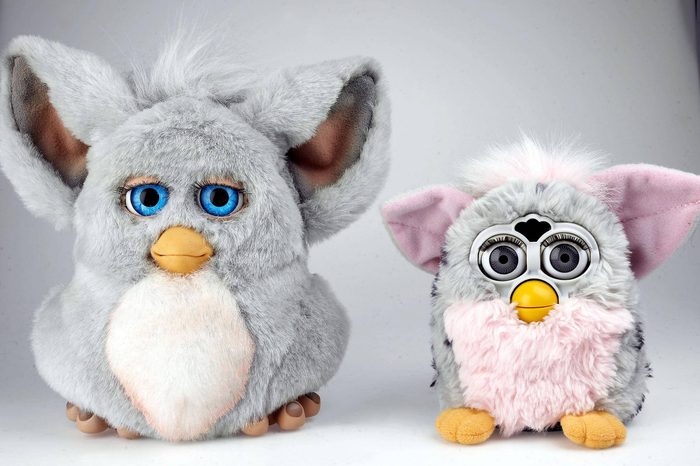
1998: Furby
If you can speak Furbish, you probably were a kid in 1998 with a lovable pet Furby, a bilingual animatronic creature. He came speaking Furbish, but you could teach your new friend English. The Hasbro toy sold 1.8 million creatures that year, and 14 million more the following year.
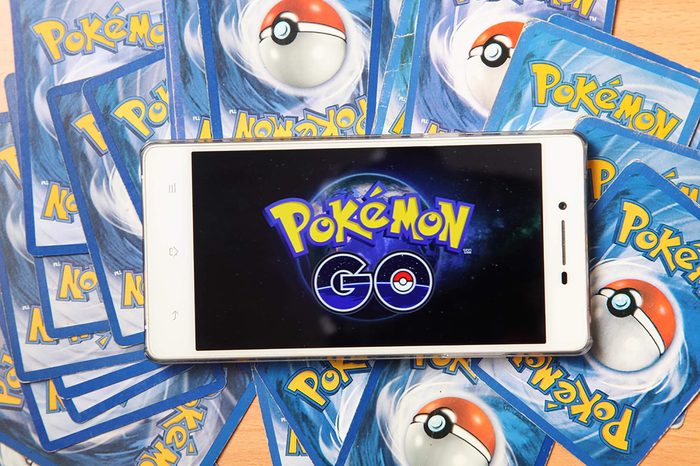
1999: Pokémon
It’s short for Pocket Monsters: With Pokémon, Nintendo game creators Satoshi Tajiri and Ken Sugimori created the second-largest gaming franchise ever (Mario Bros. is still No. 1). The old-fashioned version cards and the augmented-reality Pokémon Go retain their popularity today.
Keep scrolling to see the most popular toys by year as we head into the new millennium.

2000: Razor Scooter
No need to master the skateboard when you could get on this sleek, modern scooter. The Razor Scooter became the rage for kids who wanted streamlined wheels to scoot around on.
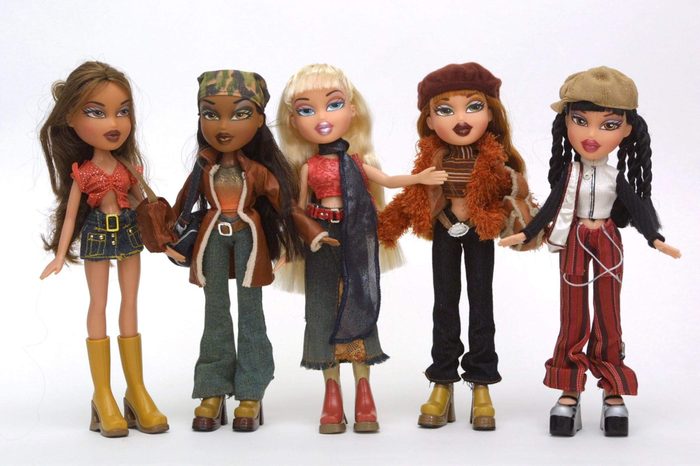
2001: Bratz
Created by Carter Bryant and MGA Entertainment, Bratz dolls were marketed as fashionable and glitzy and given modern names like Chloe, Jade, Sasha and Yasmin. Though not as popular or as controversial as Barbie dolls, by 2005, more than 125 million Bratz dolls were sold around the world, earning MGA $2 billion in sales.
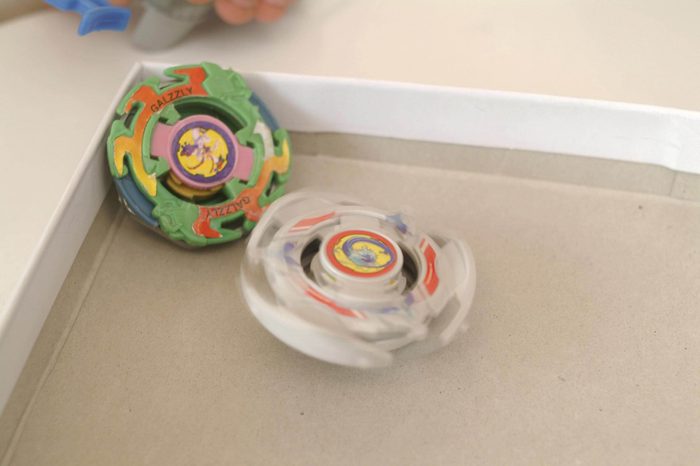
2002: Beyblade
Kids could compete in a battle with these contemporary spinning tops from Hasbro with names like Drago, Storm Pegasus and Dark Wolf. The company sold a whopping 120 million of the tops.
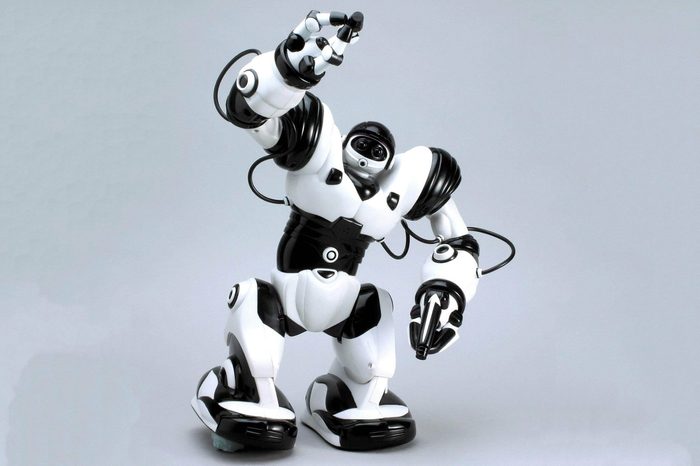
2003: Robosapien
Calling it a “humanoid with attitude that comes to life at your command and performs amazing tasks,” New Atlas explained that this toy robot-human had 67 pre-programmed functions. It went on to sell 2.3 million units at launch. “We did something that had never been done in personal robotics before, in that we took out the serious; something that burped and farted its ways into kids’ hearts just kind of seems to satisfy a basic primal need,” robotics physicist Mark W. Tilden told U.K.’s Boy Stuff.
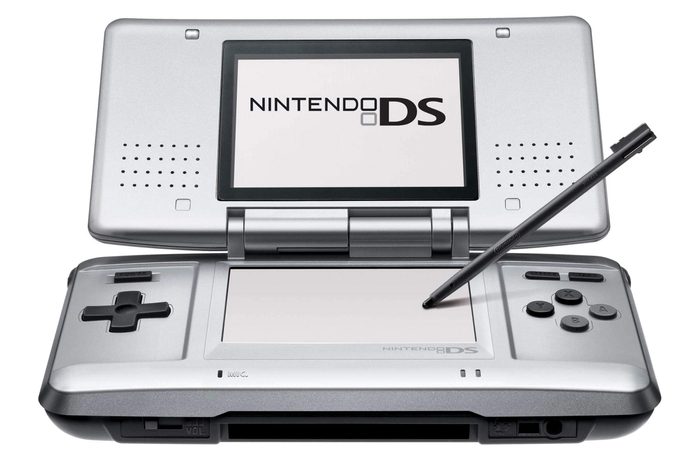
2004: Nintendo DS
The Nintendo DS brought a lot to the gaming table. The DS acronym stood for Developer’s System and Dual Screen. Besides having the multiple screens—talk about more screen time—DS consoles could connect with each other, allowing kids to play together wirelessly.
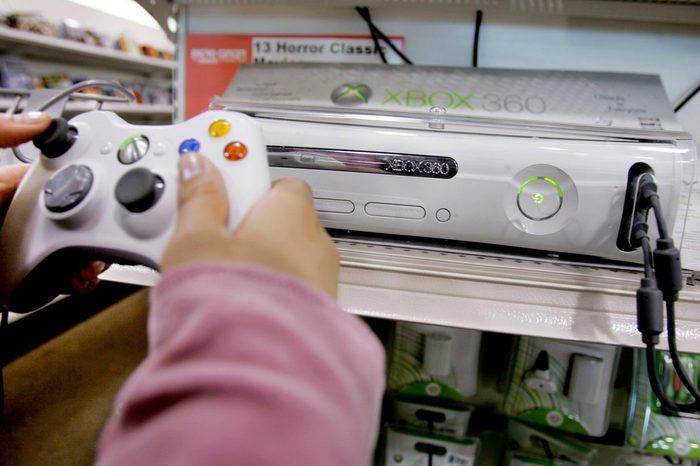
2005: XBox 360
This next generation of Microsoft’s XBox was all about introducing their new XBox Live. Now players could compete with each other online and download games from the internet. Since 2005, it has sold more than 44.6 million units worldwide.
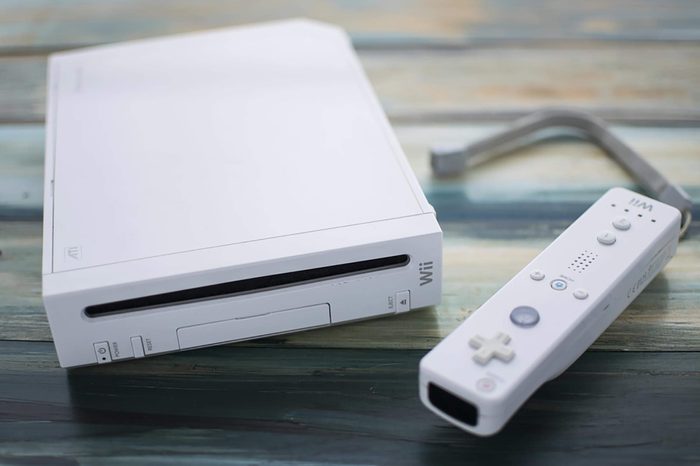
2006: Nintendo Wii
“Our goal was to come up with a machine that moms would want—easy to use, quick to start up, not a huge energy drain and quiet while it was running. Rather than just picking new technology, we thought seriously about what a game console should be,” designer Shigeru Miyamoto told Business Week. There were more than 3 million consoles sold worldwide in the launch year.
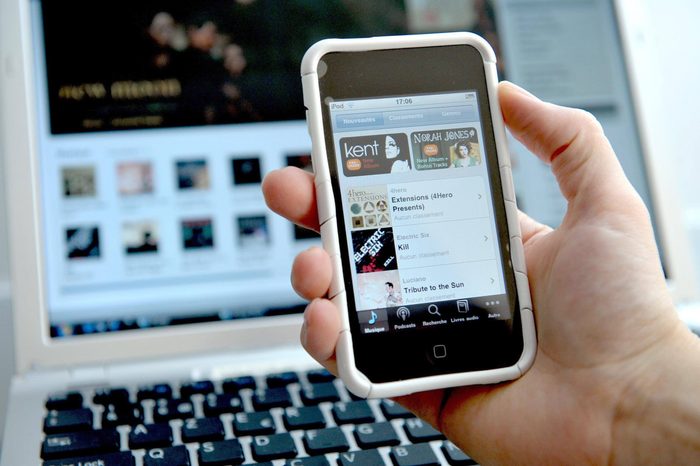
2007: iPod Touch
Before everyone and anyone had a smartphone, the iPod Touch was revolutionary. Apple’s first touchscreen music player led to the explosion of the iTunes Store.
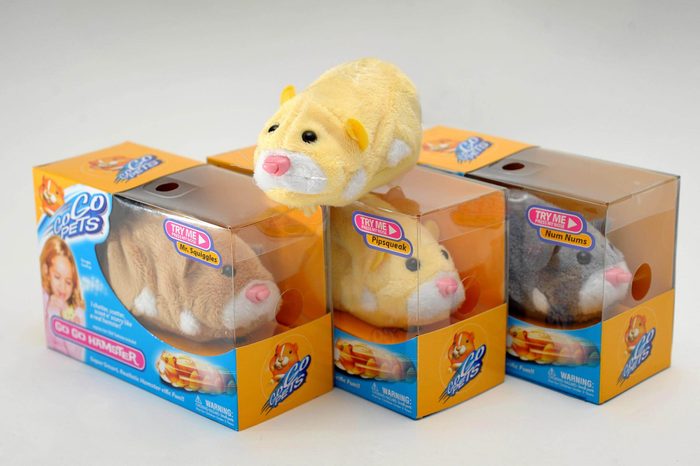
2008: Zhu Zhu Pets
Forget actual hamsters: This robotic hamster ran on batteries instead. The high demand for the real pet led creator Russ Hornsby to design Zhu Zhus. Much like the real thing, they even made affectionate noises when cuddled. According to the Washington Post, the company made at least $70 million in its launch year.
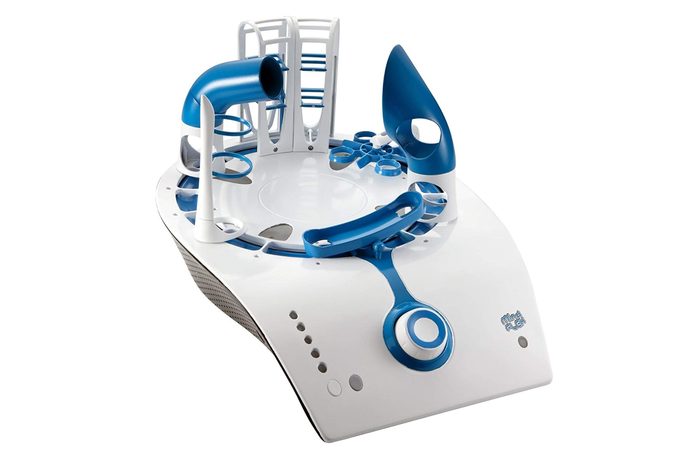
2009: Mindflex
Perhaps this wasn’t the most coveted toy of the year, but it was definitely the most influential, according to Time Magazine. Mattel’s toy was revolutionary in that it could actually measure brainwave activity and use it to guide a blue Mindflex ball through a series of obstacles. Pretty cool for a toy.
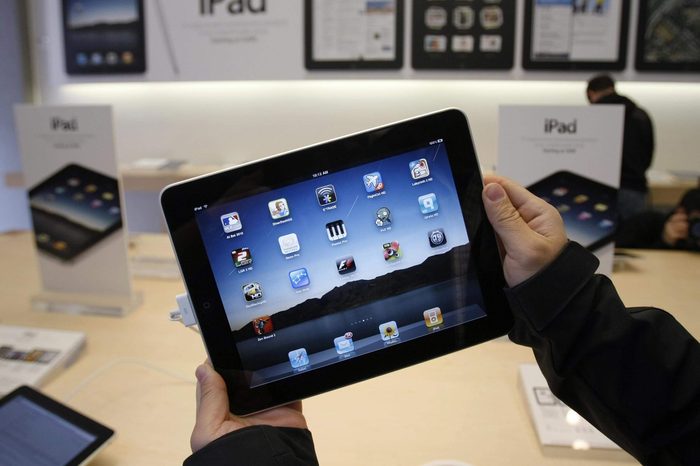
2010: iPad
Although the iPad is far from a toy, it revolutionized touchscreen computing for everyone—from kids to grandparents. But for kids, this tech gadget offered tons of games and entertainment at their fingertips. It’s no surprise that 300,000 iPads were sold on its release day.
Why trust us
At Reader’s Digest, we’re committed to producing high-quality content by writers with expertise and experience in their field in consultation with relevant, qualified experts. We rely on reputable primary sources, including government and professional organizations and academic institutions as well as our writers’ personal experiences where appropriate. We verify all facts and data, back them with credible sourcing and revisit them over time to ensure they remain accurate and up to date. Read more about our team, our contributors and our editorial policies.

















